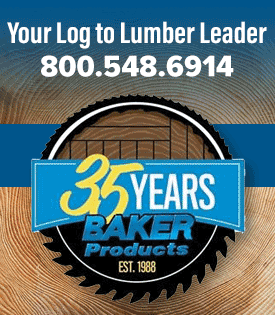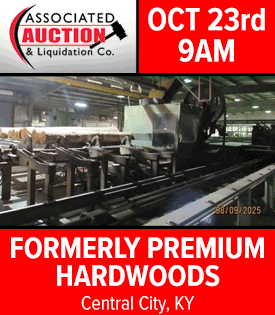LUMBERMENOnline.com’s Latest Industry News & Articles
Submit your company’s latest news or articleThanks to the NHLA for working to keep the hardwood lumber industry informed. This update was received today.
Dear NHLA Members and Hardwood Industry Friends,
As previously announced, the "REVISED" Hardwood Lumber and Hardwood Plywood Promotion, Research and Information Order (Hardwood Check-Off) has been released by the US Department of Agriculture. Although extensive in detail with minor clarifications, the new Order has two changes that are a significant from the original.
Background:
In June 2011, USDA received a proposal for a national research and promotion program for hardwood lumber and hardwood plywood from the Blue Ribbon Committee (BRC). The BRC is a committee of 14 hardwood lumber and hardwood plywood industry representatives. The BRC proposed a program that would be financed by an assessment on hardwood lumber and hardwood plywood manufacturers and administered by a board of industry members selected by the Secretary of Agriculture. The purpose of the program would be to strengthen the position of hardwood lumber and hardwood plywood in the marketplace and maintain and expand markets for hardwood lumber and hardwood plywood. A total of 939 comments were received in response to the original proposed order. In response the USDA has submitted a "revised" Order now open for comment.
Two Significant Changes:
After a staff review of the 46 pages included in the revised Order, two changes from the original Order will have significant impact to the Order.
1. The definition of "Hardwood Lumber Products" has been changed to mean Green/Air Dried/Kiln Dried lumber that has been transformed into products that remain boards meeting or exceeding the level of "Grade 3ACommon" as defined by National Hardwood Lumber Association Rules for the Inspection of Hardwood & Cypress effective January 1, 2015 or equivalent proprietary standard. As such, hardwood lumber would not include industrial products which remain in board or block form such as ties, cants, crane mat material and pallet stock.
2. USDA will now require approval by a majority of manufacturers voting in the referendum who also represent a majority of the volume represented in the referendum. Only manufacturers who would be paying an assessment under the program would be eligible to vote. (Note: We asked USDA for clarification on this and were told there would be none until after the comments)
Additionally, the Revised Order clarifies some definitions, and restates that lumber to be exported is included. It also clarified that the species Yellow Poplar (Tulipwood) was to be included, and that Air Dried lumber is to be treated equal to Kiln Dried lumber.
Proposed Action for the Hardwood Lumber Industry:
Please take time to comment at the link below. In addition to your general comments, the USDA is reaching out to the industry to get answers on very specific questions regarding the programs viability.
Regarding Hardwood Plywood:
What are the benefits and the drawbacks for including hardwood lumber and hardwood plywood together in the same research and promotion program?
How would the proposed program benefit the hardwood plywood sector of the industry?
What types of promotion programs could be envisioned by the industry for hardwood plywood and how would this impact the hardwood lumber sector of the industry?
What impact would excluding hardwood plywood have on the expected amount of assessments to be collected under the proposed program?
What impact would excluding hardwood plywood have on the proposed Board structure?
Regarding Assessments:
Should the assessment computation be revised? If so, how should it be revised and what would be the impact on the projected amount of assessments to be collected under the proposed program?
Should the proposed rates of assessment on any of the four types of covered hardwood be revised? If so, to what level and what would be the impact on the projected amount of assessments to be collected under the proposed program?
Reminder - the comment period is now open and will close on July 9!
Submit comments online at: http://www.regulations.gov or faxed to 201-205-2800 or to the Promotion and Economics Division, Fruit and Vegetable Program, AMS, USDA, 1400 Independence Avenue, SW., Room 1406-S, Stop 0244, Washington, DC 20250-0244. All comments should reference the document number and the date and page number of this issue of the Federal Register.
NHLA will continue to follow other changes or clarifications and bring those to the industry.
FOR FURTHER INFORMATION CONTACT: Patricia A. Petrella, Marketing Specialist, Promotion and Economics Division, Fruit and Vegetable Program, by phone at 301-334-2891; fax at 301-334-2896; or email at [email protected].
American Wood Council (AWC) President and CEO Robert Glowinski has issued the following statement regarding the final issuance of U.S. Department of Agriculture (USDA) BioPreferred Program regulations today. The 2014 Farm Bill states that forest products, previously considered to be ineligible because they were "mature market," are now eligible products to be recognized in USDA biobased programs.
"Wood products are by their very nature biobased. The USDA BioPreferred Program now officially recognizes the innovative nature of wood products in the market today, including recognition of third-party verified Environmental Product Declarations.
"EPDs are the nutrition labels of the building products. Designers, builders and consumers now have science-based tools to determine the environmental impacts of a material. Wood products will often be found to have a smaller environmental impact because they are renewable, have lower emissions and embodied energy, are manufactured using a majority of biomass for energy needs and provide long-term storage of carbon."
The American Wood Council (AWC) has released a series of updated easy-to-use Guides to Wood Construction in High Wind Areas. The guides can be found on the AWC website: http://www.awc.org/standards/wfcm/2012.php.
The guides, based on provisions contained in AWC's 2012 Wood Frame Construction Manual (WFCM), establish a specific set of prescriptive, wind-resistive structural requirements for wood-frame buildings of sizes and shapes specified in the "Applicability" section of each. The provisions of the guides, developed specifically for builders, are directed toward ensuring structural integrity for resisting wind loads.
The 2012 WFCM is the referenced document for high-wind wood-frame construction in the International Building Code (IBC). Use of the high-wind provisions of these WFCM Guides therefore results in design solutions that prescriptively meet the requirements of the WFCM, IRC and IBC, where applicable.
"While wind load requirements may vary from jurisdiction to jurisdiction, national standards recognize that wood buildings can be designed to effectively resist these forces," AWC Vice President of Engineering Bradford Douglas said. "About half of the states in the United States have adopted the 2012 International Residential Code, which means the 2012 WFCM and these guides are accepted in those states."
Separate documents address wind design requirements for 115-, 120-, 130-, 140-, 150- and 160-miles-per-hour (Exposures B and C) wind zones. Areas vulnerable to hurricanes include the U.S. Atlantic and Gulf of Mexico coasts where basic design wind speeds are greater than 115 mph.
The 2012 Guides are comparable to earlier versions based on the 2001 WFCM which have been widely distributed and used along the Atlantic and Gulf Coasts. However, wind load provisions changed in the building-code-referenced 2010 edition of Minimum Design Loads for Buildings and Other Structures (ASCE/SEI 7-10) and the 2012 WFCM has incorporated those changes.
Other wind speeds and exposures not addressed in the guides are covered in the 2012 WFCM.
WASHINGTON – American Forest & Paper Association (AF&PA) President and CEO Donna Harman and American Wood Council (AWC) President and CEO Robert Glowinski have issued the following statements supporting today’s passage of a bill (SB 752) by the Oregon Legislative Assembly to conditionally exempt carbon dioxide (CO2) emissions from biomass from state air pollution regulations.
Donna Harman, President and CEO, AF&PA:
“Oregon has long recognized biomass energy as renewable and carbon neutral, a policy that has worked well in supporting both forest health and the state’s rural economy. We thank Senators Chris Edwards and Tim Knopp for leading this legislation.”
Robert Glowinski, President and CEO, AWC:
“The net impact of this carbon cycle is that CO2 flows in and out of forests and through the forest products industry by both biomass combustion and sequestration in products. The carbon neutrality of energy from biomass harvested from sustainably managed forests has been repeatedly recognized by an abundance of studies and is accepted by agencies, institutions, regulations and legislation. This bill will reinstate and codify Oregon’s carbon neutrality policy.”
# # #
About AF&PA
The American Forest & Paper Association (AF&PA) serves to advance a sustainable U.S. pulp, paper, packaging, and wood products manufacturing industry through fact-based public policy and marketplace advocacy. AF&PA member companies make products essential for everyday life from renewable and recyclable resources and are committed to continuous improvement through the industry’s sustainability initiative - Better Practices, Better Planet 2020. The forest products industry accounts for approximately 4 percent of the total U.S. manufacturing GDP, manufactures over $200 billion in products annually, and employs approximately 900,000 men and women. The industry meets a payroll of approximately $50 billion annually and is among the top 10 manufacturing sector employers in 47 states. Visit AF&PA online at www.afandpa.org or follow us on Twitter @ForestandPaper.
About AWC
The American Wood Council (AWC) is the voice of North American wood products manufacturing, representing over 75 percent of an industry that provides approximately 400,000 men and women with family-wage jobs. AWC members make products that are essential to everyday life from a renewable resource that absorbs and sequesters carbon. Staff experts develop state-of-the-art engineering data, technology, and standards for wood products to assure their safe and efficient design, as well as provide information on wood design, green building, and environmental regulations. AWC also advocates for balanced government policies that affect wood products.
www.awc.org | @woodcouncil
Wood-Mizer LLC, the world’s leading sawmill manufacturer, releases a new line of lumber drying dehumidification kiln kits. The Wood-Mizer KD Series of kilns, ranging from 1,000 to 35,000 board feet capacities, offer a variety of lumber drying solutions for any sized operation.
Joining the Wood-Mizer KS50 Solar Kiln, the KD Series of Dehumidification Kiln Kits feature 100% corrosion resistant aluminum cabinets and specially coated dehumidification coils to ensure quality performance and an extra-long life.
KD150
• Capacity: 300- 1,000 board feet
KD250
• Capacity: 1,500- 4,000 board feet
KD450
• Capacity: 4,000- 15,000 board feet
KD550
• Capacity: 10,000- 35,000 board feet
“The KD Series gives both entry-level and mid-size lumber operations an opportunity to maximize the value of their lumber in-house while eliminating the need to rely on outside vendors for drying lumber,” said Darryl Floyd, Wood-Mizer COO. “With the addition of our new kiln line, Wood-Mizer continues to remain committed to expand our equipment and services in order to satisfy our customers’ sawing and lumber needs from forest to final form.”
The Wood-Mizer KD Series of Dehumidification Kiln Kits is available for purchase. Visit www.woodmizer.com/kilns for more information.
###
As the leading manufacturer of portable band sawmills for more than 30 years, Wood-Mizer offers an extensive line of portable and industrial sawmill equipment. The company supports its equipment with legendary customer service, blades, and blade maintenance equipment. For more information about Wood-Mizer, call 800.553.0182 or visit www.woodmizer.com.
St Martin, MN, United States | June 2015
To help customers capitalize on growing opportunities in recycling markets, Rotochopper is launching a new line of industrial slow-speed shredders. The first model in this new line, the HTS-2, made its debut at Waste Expo in Las Vegas. The HTS-2 is an aggressive dual shaft shredder designed to pre-process stumps, commingled C & D, railroad ties, and other forms of mixed or contaminated waste.
Maximizing the Potential of Waste Materials
The HTS-2 shredder minimizes the costs of turning challenging feedstocks into end products like compost, landscape mulch, and boiler fuel. By reducing maintenance costs and increasing total uptime percentage, the HTS-2 shredder maximizes the value of raw materials that pose problems for high-speed grinders. Vince Hundt, Rotochopper co-founder and International Sales Manager, said “The introduction of the HTS-2 is the completion of a long-term Rotochopper plan and promise to provide our customers with a complete line of grinders from hammer-mill to hi-torque. To the continuing success of our high speed horizontal grinders and hammer mills we now add the HTS-2 hightorque grinder we have been talking about.”
Streamlined Maintenance & Rugged Reliability
The HTS-2 simplifies operation and maintenance with a user-friendly design that keeps your shredder in sync with the rest of your processing equipment. The open shredding table allows dirt, stones, and other abrasives to easily pass, reducing wear rates. Grease points and other routine maintenance areas are easily accessible. The aggressive tooth design efficiently pulls in raw material for continuous throughput without a feed ram. The teeth and counter teeth ensure active shredding in both directions. Weld-on shredding teeth stand-up to contaminants better than bolt-on inserts. Designed for extreme duty applications, the radial piston drive motors deliver over 1,000,000 in.- lbs. of torque to each shaft in both directions. These radial piston drive motors offer better reliability and parts availability than gear boxes and other systems commonly used to generate the required torque levels.
Flexible for Diverse Work Environments
The HTS-2 shredder is available with diesel or electric power units from 400 to 630 hp, in stationary, portable, or track-mounted configurations. Seamless Integration with Rotochopper Grinders and Hammermills Hundt observed, “We now have the answer to processing your nasty, contaminated material without pre-sorting. The HTS-2 coupled with a Rotochopper horizontal grinder and hammermill can turn contaminated C&D into whatever product the local market wants.” The HTS-2 shredder integrates with Rotochopper horizontal grinders to provide effortless fiber sizing of challenging materials. With a Rotochopper multi-stage fiber sizing system, raw waste goes in and a finished product comes out. The shredder outputs a steady stream of material that is optimized for metal removal and grinding. An in-line Rotochopper grinder then efficiently refines the shredded material to finished specifications for landscape mulch, compost, biomass fuel, or other materials. With the addition of an in-line Rotochopper hammermill, a Rotochopper multi-stage system can even produce fine texture fiber for animal bedding, fuel pellets, and other short fiber applications.
Factory-Direct
Like every machine in the Rotochopper line-up, the HTS-2 is backed by factory-direct customer support from service technicians that specialize exclusively in Rotochopper equipment. “Our unprecedented customer loyalty will continue to grow because of our over-the-top service,” Hundt stated. “We have a reputation to honor: We love our customers and we love building grinders!”
25 Years of Fiber Sizing Innovation
We launched the Rotochopper brand 25 years ago with a philosophy that waste materials should be viewed as opportunities instead of liabilities. That philosophy helped a broad range of companies transform the nuisance of waste materials into profit centers like colored landscape mulch, compost, boiler fuel, animal bedding, and hot mix asphalt supplement (from shingles). The introduction of the Rotochopper shredder line helps bring this unique approach to a broader range of raw materials.
About Rotochopper
Rotochopper, Inc. manufacturers innovative fiber sizing equipment that turns waste materials into profitable end product like landscape mulch, animal bedding, biomass fuel, and compost. The Rotochopper equipment line-up includes horizontal high-speed grinders, slow-speed shredders, wood chip processors, asphalt shingle grinders, and mobile bagging systems.
Visit Rotochopper:
www.rotochopper.com | facebook.com/rotochopper | @Rotochopper | google.com/+rotochopper
Leading forestry associations plan to correct the record on false and distorted coverage of bioenergy
WASHINGTON, D.C. — A leading coalition of forest owners, wood suppliers and manufacturers of pulp and paper goods announced today the creation of Biomass101.org, a clearinghouse for scientifically sound information on carbon-neutral bioenergy. Biomass101 is an effort jointly produced by the American Forest & Paper Association, American Wood Council, Forest Resources Association, and National Alliance of Forest Owners.
"With biomass becoming a more prominent part of the national renewable energy discussion, Americans deserve a conversation that is honest, accurate, and reliable," said Chuck Fuqua, Executive Director for Strategic Communications at the American Forest & Paper Association.
"As the leading coalition of experts who care about and depend upon the sustainability of American forests, we are in a uniquely authoritative position in the conversation on the carbon benefits of forest bioenergy," said Gretchen Schaefer, Vice President of Communications at National Alliance of Forest Owners.
Biomass101.org will include blog posts, infographics, videos and other digital media content that corrects false or distorted information in the press. The effort will also have a robust social media presence.
"It is essential that leading publications get the basic facts on biomass right to ensure objective analysis. As the hands-on stewards throughout the life cycle of forestry and forest products, we should be a central voice in the discussion and make sure that coverage is accurate and fair-minded," said Neil A. Ward, Vice President of Public Affairs at the Forest Resources Association.
"When we encounter coverage that is not factual or objective, we feel obligated to correct the record so that the public receives balanced and unbiased information," said Heather Stegner, Communications Director at the American Wood Council.
McDonough Manufacturing, of Eau Claire, Wisconsin, the world leader in sawmill solutions, is proud to unveil its redesigned interactive website. The new website, www.mcdonough-mfg.com was created by the team at LumbermenOnline.com, the sister company of LUMBERMEN’S Equipment Digest and features improved graphic interface and easy to use navigation. Since 1888 McDonough has followed a simple “good neighbor” philosophy coupled with a family atmosphere that puts the customer’s need for profit and efficiency first. Visitors to the new site will find complete product information including features, product specifications and video as well as quick print product information, career opportunities and more. If your sawmill operation needs to learn more about kerf savings offered by band resaws and headrigs, how edger optimization can improve your bottom line, advanced material handling, a new carriage or a complete turn-key installation you’ll find it online at www.mcdonough-mfg.com.
WASHINGTON – American Wood Council (AWC) President and CEO Robert Glowinski has issued the following statement on the letter Massachusetts Sens. Ed Markey and Elizabeth Warren sent to the Environmental Protection Agency (EPA) calling for a ban on biomass as a compliance option for the president’s Climate Action Plan.
“This carbon neutrality of biomass harvested from sustainably managed forests has been recognized repeatedly by an abundance of studies, agencies, institutions, legislation and rules around the world. Renewable biomass-based energy has been identified as a key part of the U.S. energy solution and should continue to be recognized for its role in the sustainable carbon cycle.
“Almost 80 percent of the energy used by AWC member companies is generated from renewable biomass, most of which is in the form of residuals from manufacturing and operations. This biomass would otherwise be disposed of, at which point would also release CO2 to the atmosphere. Conversion to biomass energy recognizes and captures the inherent energy value prior to disposal, which allows for displacement of fossil fuel use. Further, the wood products created from use of this biomass energy store additional carbon for long periods of time, sequestering it from the atmosphere.”
# # #
Editor’s Note
Excerpt from the Nov. 19 memorandum by Janet McCabe supporting biomass as a compliance option:
“In the implementation of the CPP, the EPA anticipates that some states will wish to include the use of biogenic feedstocks in their compliance plans. When considering state compliance plans, the Agency expects to recognize the biogenic CO2 emissions and climate policy benefits of waste-derived and certain forest-derived industrial byproduct feedstocks, based on the conclusions supported by a variety of technical studies, including the revised Framework. In addition, given the importance of sustainable land management in achieving the carbon reduction goals of the President's Climate Action Plan, the EPA expects that states' reliance specifically on sustainably-derived agricultural- and forest-derived feedstocks may also be an approvable element of their compliance plans.”
The American Wood Council (AWC) is the voice of North American wood products manufacturing, representing over 75 percent of an industry that provides approximately 400,000 men and women with family-wage jobs. AWC members make products that are essential to everyday life from a renewable resource that absorbs and sequesters carbon. Staff experts develop state-of-the-art engineering data, technology, and standards for wood products to assure their safe and efficient design, as well as provide information on wood design, green building, and environmental regulations. AWC also advocates for balanced government policies that affect wood products.
www.awc.org | @woodcouncil
Building Safety Month in May emphasizes the need to adopt modern building codes
LEESBURG, VA. – During Building Safety Month, the American Wood Council (AWC) is highlighting the importance of deck safety.
“Most deck failures occur during the warmer seasons,” said AWC Vice President of Technology Transfer John “Buddy” Showalter. “We are asking builders to take time this month to become highly conversant in proper deck design and to check that existing deck structures are still compliant with building codes.”
AWC has published the newest version of Design for Code Acceptance #6—Prescriptive Residential Deck Construction Guide (DCA 6) to encourage compliance with the latest building codes. Find out more about deck safety during Building Safety Month with the following:
• “Check Your Decks” article: An article on LinkedIn Pulse details key changes and minimum requirements for wood deck construction.
• Twitter Q&A: On Wednesday, May 20 at 2 p.m. ET, AWC will host a #SafeDeckChat on Twitter. Participants, including the International Code Council and North American Deck and Railing Association, will be discussing how to make sure a deck is safe, and what the building codes recommend when building a deck. Use the hashtag on Twitter to follow the conversation.
• Webinar: A complimentary webinar on recent updates to DCA 6 will be held on Thursday, May 21 at 1:55 p.m. ET. Attendees can earn valuable continuing education credits and will be provided an overview of DCA 6 and several examples showing application of the deck guide.
###
The American Wood Council (AWC) is the voice of North American wood products manufacturing, representing over 75 percent of an industry that provides approximately 400,000 men and women with family-wage jobs. AWC members make products that are essential to everyday life from a renewable resource that absorbs and sequesters carbon. Staff experts develop state-of-the-art engineering data, technology, and standards for wood products to assure their safe and efficient design, as well as provide information on wood design, green building, and environmental regulations. AWC also advocates for balanced government policies that affect wood products.
www.awc.org | @woodcouncil
Ricer Equipment announces the hiring of Jeff Beck as its newest sales representative.
Jeff will represent Tigercat Equipment and the complete line of Ricer Forestry Equipment in Central and Northern Ohio. Jeff comes to Ricer Equipment with 35 years’ experience servicing the equipment and finance needs of The Forest Products Industry. He was most recently with Commercial Credit Group, structuring equipment finance loans. Previously, Jeff represented John Deere Forestry equipment with Murphy Tractor and Nortrax. Jeff spent a short period with Ohio Cat, but most Loggers and Sawmill Owners will remember him from his 23 years with Lyons Equipment in Ohio and West Virginia. Jeff says his early days with Lyons allowed him to experience the development and evolution of logging equipment (skidders, knuckleboom loaders, feller bunchers and processing equipment) from relatively light weight, low horse power machines, to highly productive harvesting systems. He remembers with a smile competing back then, against another young sales representative named Tom Ricer, on skidder and loader deals.
Jeff lives with his wife Rachael in Chillicothe. He can be reached by cell phone at (740) 253-5779, or email him at RicerEquipment.com
Welcome aboard Jeff!!
Introducing the new smaller, EnviroMax, All Terrain Forwarder. This smaller version will move clean wood to the roadside assuring a steady supply of wood to keep your trucks moving, or feed a portable mill, with a uninterrupted supply of clean logs delivered on the skid way .
Trees can be cut, and trucks will always be able to move logs on the road, but, the connection from the woods to the road is where EnviroMax fills the gap. This super low ground pressure machine will overcome the problems of soft, or sensitive soil, and loss of production due to extended wet weather, and breakup conditions. With 3 psi empty, and 4.5 psi loaded, those numbers guarantee your ability to be profitable, year around, and not destroy the woodlot with deep ruts. Land owners will appreciate your ability to harvest and not tear up their ground. Timber purchase is greatly enhanced when you are able to demonstrate your ability to do a superb harvest under any condition.
This machine is built on a proven Morooka style track system, with all new tracks, rollers, and sprockets. The new hydrostatic pumps and motors are powered by a new Cummins QSB 4.5 engine. New heavy duty gear drives move the tracks.
The European style K.T.S. loader is extremely well built for long dependable service, and compliments the size of this machine well. It will lift 5000 pounds up close and will reach over 20 feet with the extension boom. The loader has 360 degree rotation. The professional duty grapple is European style with continuous rotation.
For more information, contact Howard Godfrey at 440 645 7970 or email, [email protected]





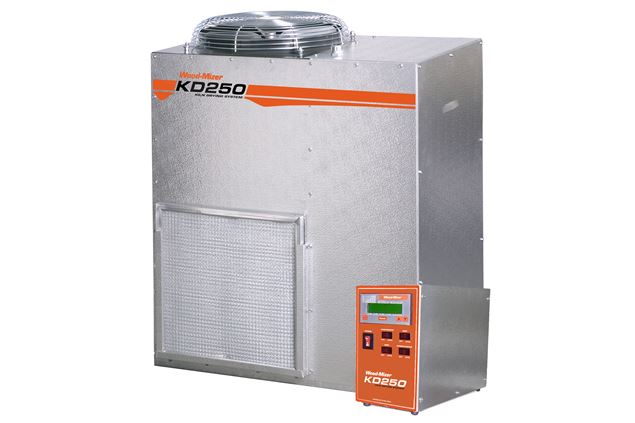
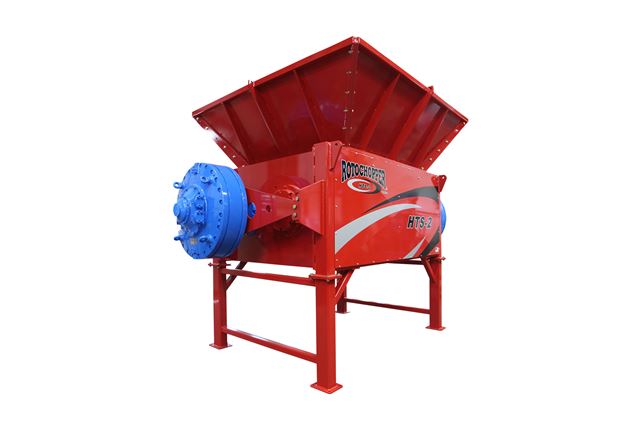

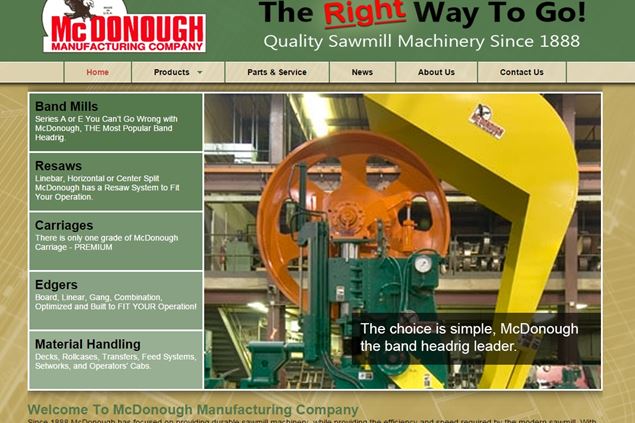



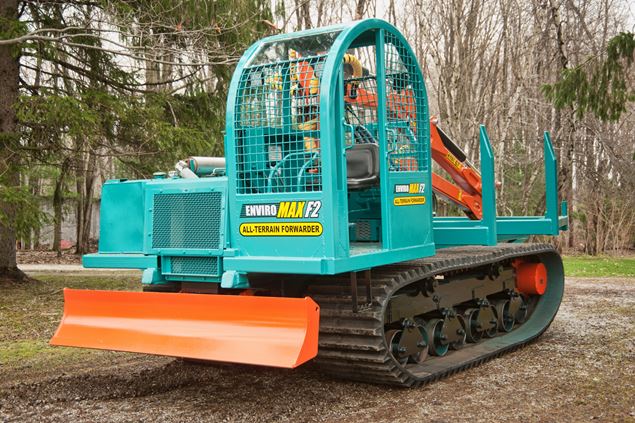



.gif)
